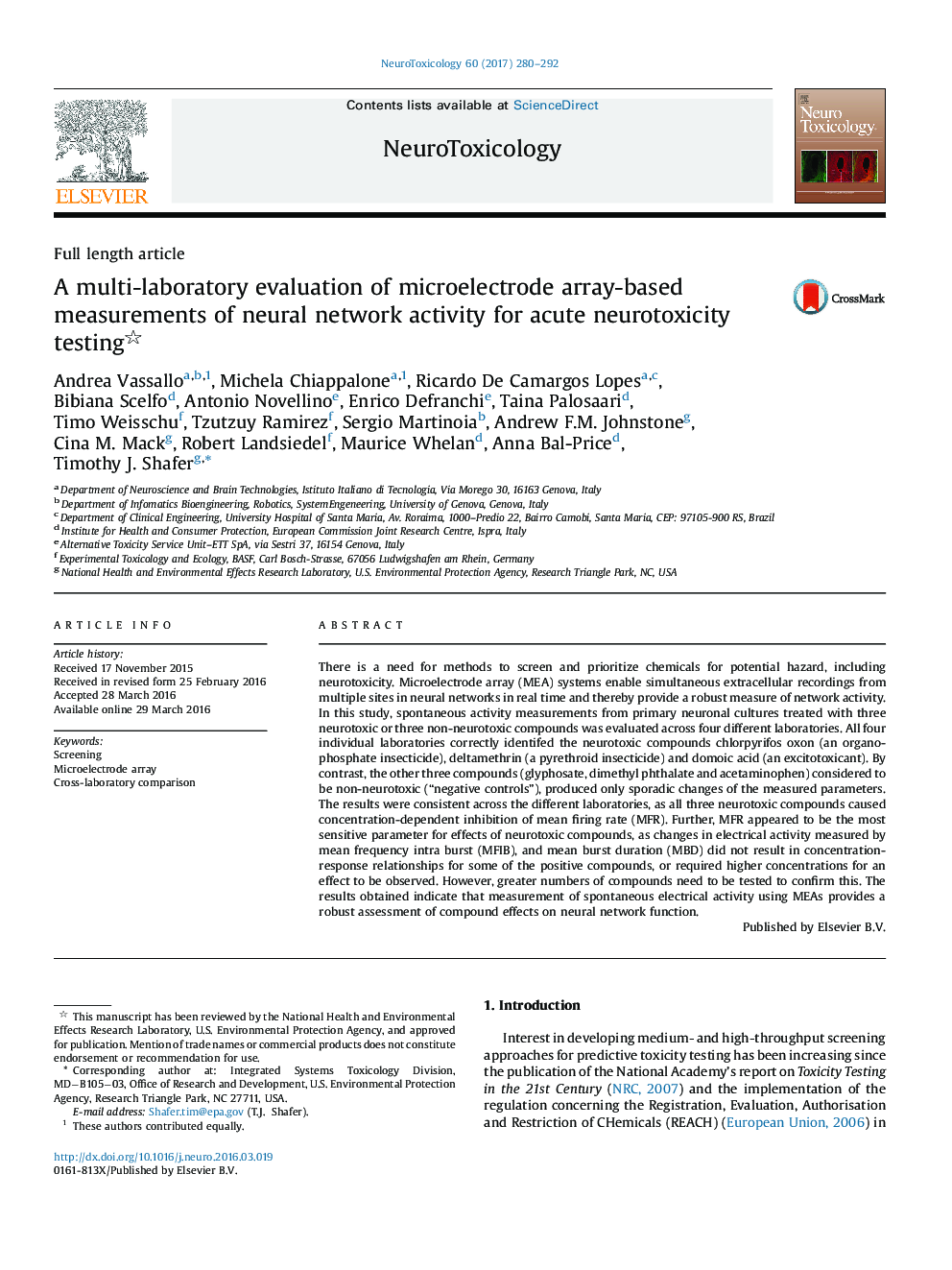| Article ID | Journal | Published Year | Pages | File Type |
|---|---|---|---|---|
| 5560850 | NeuroToxicology | 2017 | 13 Pages |
â¢Four laboratories tested 6 compounds for neuroactivity using microelectrode arrays.â¢All four laboratories were able to correctly identify the three neurotoxic compounds.â¢Three non-neuroactive compounds were correctly identified 10/12 times.â¢Despite methodological differences, results were consistent across laboratories.â¢These results support use of microelectrode arrays for neurotoxicity screening.
There is a need for methods to screen and prioritize chemicals for potential hazard, including neurotoxicity. Microelectrode array (MEA) systems enable simultaneous extracellular recordings from multiple sites in neural networks in real time and thereby provide a robust measure of network activity. In this study, spontaneous activity measurements from primary neuronal cultures treated with three neurotoxic or three non-neurotoxic compounds was evaluated across four different laboratories. All four individual laboratories correctly identifed the neurotoxic compounds chlorpyrifos oxon (an organophosphate insecticide), deltamethrin (a pyrethroid insecticide) and domoic acid (an excitotoxicant). By contrast, the other three compounds (glyphosate, dimethyl phthalate and acetaminophen) considered to be non-neurotoxic (“negative controls”), produced only sporadic changes of the measured parameters. The results were consistent across the different laboratories, as all three neurotoxic compounds caused concentration-dependent inhibition of mean firing rate (MFR). Further, MFR appeared to be the most sensitive parameter for effects of neurotoxic compounds, as changes in electrical activity measured by mean frequency intra burst (MFIB), and mean burst duration (MBD) did not result in concentration-response relationships for some of the positive compounds, or required higher concentrations for an effect to be observed. However, greater numbers of compounds need to be tested to confirm this. The results obtained indicate that measurement of spontaneous electrical activity using MEAs provides a robust assessment of compound effects on neural network function.
